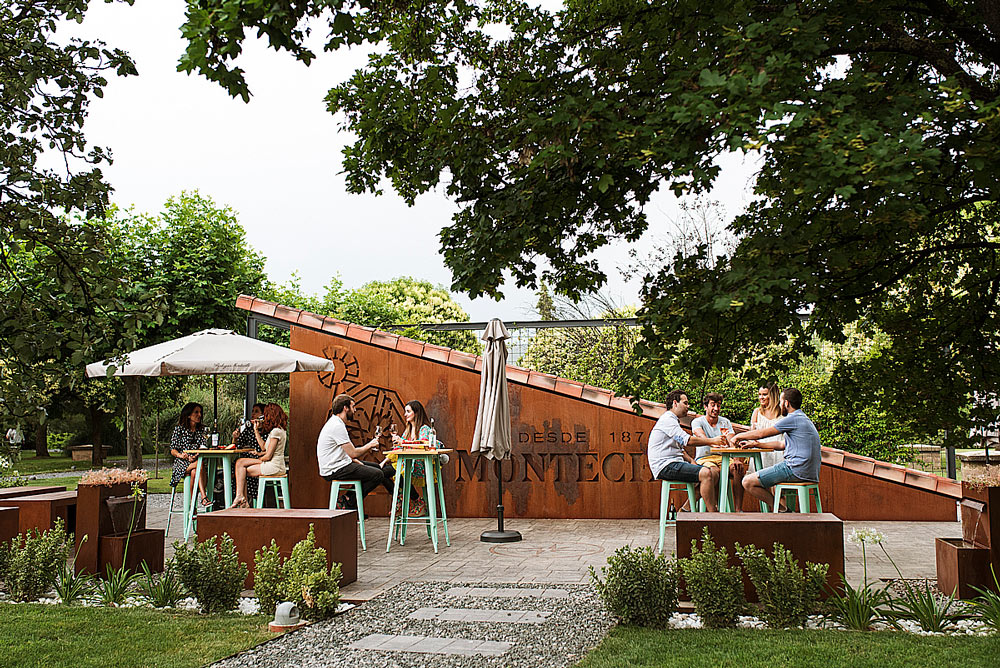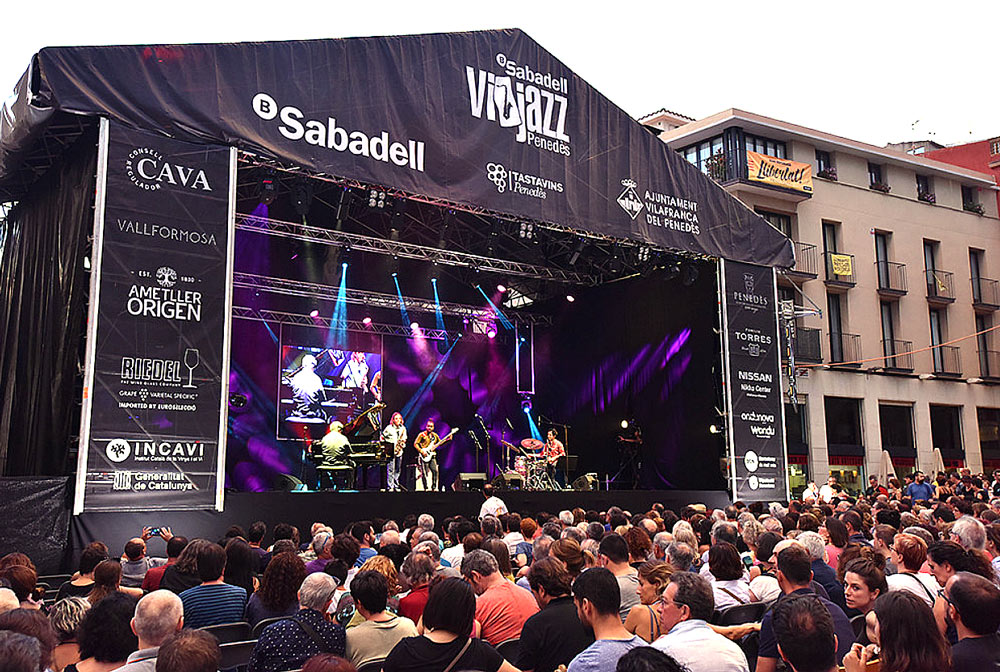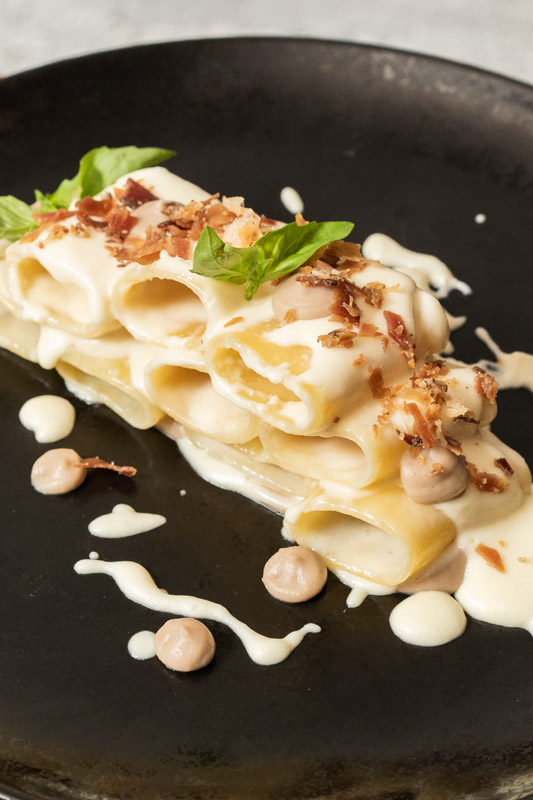Many of us have reason to celebrate, or will soon, as the pandemic gradually recedes from immediate concern and we all gain something of our old lives back. It’s also summertime in the northern hemisphere, and for many, that means hanging outside with friends drinking summery things, ideally chilled and cheerful.
Enter pink Prosecco, the newest, hottest wine category on the planet.
It’s not every day that a whole new kind of wine bursts onto the scene. Wine trends don’t burst at all, for the most part. They start as a trickle, driven by tastemakers and word of mouth, and if they’re extremely lucky they build over time to a torrent of interest.
But occasionally, a wine region will change its rules to allow its winemakers to do something new, and ecco! a whole new type of wine will emerge. Hello pink Prosecco.
From Past to Pink
Prosecco has been around for a long time, because it used to be the name of a grape. Believed to originate in Slovenia, it has been grown in northeastern Italy for several centuries (references to it date back to 1382).
In the modern era, however, Prosecco came to be known as specifically a white sparkling wine made from a grape of the same name. In 2009, as part of an effort to maintain protection of Prosecco as the name of a designated wine region (much as Champagne defends its name from use elsewhere) the folks in Prosecco decided to rename the grape Glera.
So now, Prosecco (technically Prosecco DOC – Denominazione di Origine Controllata) is a wine region and the style of sparkling wine made from Glera that comes from the 9 different provinces spanning Italy’s Veneto and Friuli-Venezia Giulia regions. There is also a Prosecco DOCG region surrounding the historic town of Conegliano that has stricter rules for production.
For its entire history, Prosecco has always been a white wine, but given the rise in popularity of pink bubbles, the savvy folks behind Prosecco decided they ought to make a pink version, and after much discussion and debate, they announced their change in regulations in May of 2020.
Where the Pink Comes From
Prosecco is normally made exclusively with its white grape, Glera. The new regulations for producing a Prosecco Rosé require 85% of the wine to be Glera, and the rest (in practice usually either 10% or 15%) to be red Pinot Noir, leading to a nice pale pink wine that is then fermented a second time in pressure-sealed tanks to make it sparkling. This is known as the Charmat method, which is popular for being less expensive and time-consuming than having the secondary fermentation take place in the bottle, a la Méthode Champenoise.
With a strawberries-and-cream character accented with bits of citrus or stone fruit, it’s hard not to smile when drinking a glass of well-made pink Prosecco.
As with normal Prosecco, the wines get made at varying levels of sweetness. The vast majority (perhaps as high as 99%) of Prosecco Rosé will be Brut or Extra Dry, which will contain 6-12 grams or 12-17 grams per liter of residual sugar respectively. I have yet to see a Brut Nature or Extra Brut version, which would only contain up to 3 grams or 6 grams of sugar per liter of residual sugar, respectively, but the regulations do allow for them.
It turns out roughly more than half of the wineries in the larger Prosecco DOC region were already making pink sparkling wines, but selling them under more generic regional labeling laws as vino rosato frizzante or rosato spumante. So in some ways, the allowance for a pink version of Prosecco trailed the market demand for a long time.
Not everyone is pleased with the advent of the category, however, including those behind the stricter Conegliano Valdobbiadene Prosecco DOCG, who rightly point out that Pinot Noir is not a traditional grape for the region.
A New Flavor Profile
Prosecco has become immensely popular in the last 10 to 15 years thanks to its reasonable price point and its cheery flavors of white flowers, pears, melons, and apples that lean slightly sweeter than other popular sparkling wines.
Just to put a finer point on what “immensely popular” actually means, Prosecco sales in the United States have gone from a few hundred thousand cases per year to several million, with sales growth averaging between 10 and 15% per year annually. In 2018 Prosecco sold more bottles of wine than Champagne did for the first time in its modern history.
I have observed that in the same way that everyday wine drinkers in my generation often casually refer to all sparkling wine as Champagne, most of the people I know in their twenties use “Prosecco” instead as their catch-all sparkling wine term.
Certainly Prosecco has taken the brunch world by storm, offering a fruity sparkling profile that can turn any meal into a celebration, and any glass of orange juice into a mimosa. The rosé version is likely to go over just as well (or even better). With a strawberries-and-cream character accented with bits of citrus or stone fruit, it’s hard not to smile when drinking a glass of well-made pink Prosecco.
Are these wines profound? Far from it. They can’t hold a candle to the complexity of a good rosé Champagne. But they are playful and pleasant, and that is what a lot of people are looking for in a $20 bottle of sparkling wine.
I recently arranged for a bunch of pink Prosecco to be sent my way so I could see what the fuss is about. Most come in crystal-clear bottles (some quite fancy) the better to showcase the jewel-like pale pink of their contents. I expect that many a patio bar will line them up like top-shelf liquor bottles to be ogled by well-dressed patrons.
Unfortunately, as pretty as they are, these clear bottles mean the wines will be exceptionally susceptible to being light-struck, as are most rosés these days, so retailers and consumers alike will need to make sure to keep them stored out of the sun.
Of course, no one usually hangs on to a bottle of Prosecco for long. The time from purchase to “Pop!” probably averages less than 6 hours. If you’re interested in a bottle, or twelve, here are my notes on the wines that were sent to me, in descending order by score.
Note that many of these products are new to the US market, and don’t have full retail distribution as of yet. I have provided links for online purchase where available.
Tasting Notes
2020 Tenuta Sant’Anna Brut Prosecco Rosé, Veneto, Italy
Pale baby pink in color with medium bubbles, this wine smells of strawberries and cream and a touch of citrus peel. In the mouth, silky, voluminous mousse delivers flavors of strawberry, citrus peel, and white flowers across the palate. Very clean, very pretty, with enough of a savory note in there to keep it interesting. 11% alcohol. Bucking the trend with a very dark brown glass bottle (most others are clear). Score: around 9. Cost: $16. click to buy.
2019 Tosti Brut Prosecco Rosé, Veneto, Italy
Pale peach in the glass with medium fine bubbles, this wine smells of strawberries and cream with hints of white flowers. In the mouth, a moderately coarse mousse delivers very tasty flavors of citrus peel, citrus pith, and just the barest hint of berries mixed with white flowers and cream. Wonderfully dry and elegant. 11% alcohol. Score: around 9. Cost: $15.
2019 Antonio Facchin Brut Prosecco Rosé, Veneto, Italy
A pale peach color in the glass with medium-fine bubbles, this wine smells of wet pavement, citrus peel, and white flowers. In the mouth, a gorgeous, silky mousse delivers delicate and refined flavors of citrus peel, hibiscus, and green strawberries with a nice floral note wafting above it all. Excellent acidity. Quite refined. 11.5% alcohol. Bucking the trend with a dark green bottle (most others are clear). Score: around 9. Cost: $15.
2019 Albino Armani Extra Dry Prosecco Rosé, Veneto, Italy
A pale peach color in the glass with medium to fine bubbles, this wine smells of berries and white flowers. In the mouth, a velvety, voluminous mousse delivers wonderfully delicate flavors of strawberries, citrus peel, and white flowers. Only the faintest hint of sweetness. Quite pretty. 11% alcohol. Score: around 9. Cost: $20.
2020 Astoria Vini Extra Dry Prosecco Rosé, Veneto, Italy
A pale orangey-pink in color with moderately fine bubbles, this wine smells of sweet berries, citrus peel, and white flowers. In the mouth, faintly sweet flavors of berries and cream, citrus peel, and white flowers are borne on a velvety mousse. Decent acidity and a nice long finish. 11% alcohol. Score: between 8.5 and 9. Cost: $??.
2020 Brilla! Extra Dry Prosecco Rosé, Veneto, Italy
Pale baby pink in the glass with rather fine bubbles, this wine smells of strawberry candy and white flowers. In the mouth, the wine doesn’t come across as quite as sweet as it smells, with a velvety mousse that delivers strawberries and cream, citrus peel, and white floral flavors amidst decent acidity and a nice clean finish. A party-pleaser for sure, especially with its paisley-embossed bottle with a pink glitter label. 11% alcohol. Score: between 8.5 and 9. Cost: $13. click to buy.
2020 Villa Sandi “Il Fresco” Brut Prosecco Rosé, Veneto, Italy
Pale baby pink in the glass with medium bubbles, this wine smells of wet chalkboard, white flowers, and a hint of berries. In the mouth, a lovely silky mousse delivers flavors of peach and strawberry across the palate, with hints of florals and pastry cream in the finish. I would love this to be a bit sharper, with a hint more acidity, but it is quite tasty. 11% alcohol. Score: between 8.5 and 9. Cost: $17. click to buy.
2019 Val d’Oca Extra Dry Prosecco Rosé, Veneto, Italy
Pale peachy pink in color with medium bubbles, this wine smells of candied citrus and white flowers. In the mouth, a relatively robust and silky mousse delivers faintly sweet flavors of orange peel and unripe berries. The sour hit at the end makes for a little more complexity. Excellent acidity and lift. 11% alcohol. Score: between 8.5 and 9. Cost: $12. click to buy.
2019 Pizzolato Brut Prosecco Rosé, Veneto, Italy
A pale peachy color in the glass with medium fine bubbles, this wine smells of apricots, strawberries, and white flowers. In the mouth, a fairly voluminous mousse delivers silky flavors of stone fruit, strawberries, and white flowers. Good acidity and nice length. Made from organically grown grapes. 11% alcohol. Score: between 8.5 and 9. Cost: $17. click to buy.
2019 Voga Extra Dry Prosecco Rosé, Veneto, Italy
Pale peachy pink in the glass with medium-fine bubbles, this wine smells of strawberry and watermelon candy. In the mouth, faintly sweet watermelon and strawberry flavors are somewhat candied with hints of white flowers and a touch of candied citrus peel lingering in the finish. A fluffy mousse and decent acidity. 11% alcohol. Comes in an embossed fishnet-patterned bottle. Score: around 8.5. Cost: $16. click to buy.
2019 Famiglia Cielo Extra Dry Prosecco Rosé, Veneto, Italy
Pale baby pink in color with medium-sized bubbles, this wine smells of cherries and whipped cream. In the mouth, faintly sweet candied cherries and white flowers have a nice bright acidity to them and a somewhat soft mousse. Citrus notes linger in the finish. 11% alcohol. Score: around 8.5. Cost: $14. click to buy.
2020 La Marca Extra Dry Prosecco Rosé, Veneto, Italy
Light coppery pink in the glass with medium-fine bubbles, this wine smells of candied orange peel and white flowers. In the mouth, faintly sweet flavors of citrus peel and white flowers are lifted on a soft mousse. Hints of gardenia linger in the finish. Would love a little bit more acidity here. 11% alcohol. Score: around 8.5. Cost: $13. click to buy.
2019 Valdo “Marca Oro” Brut Prosecco Rosé, Veneto, Italy
Light peachy-pink in color with medium-fine bubbles, this wine smells of apple skin and raspberries with a somewhat unusual wet-leaves aroma. In the mouth, distinctly savory notes of apple skin, dried apples, raspberries, and white flowers move across the palate on a coarse mousse. I wonder, in fact, if this bottle is not a little light-struck, and might be much better than it is showing at the moment. Decent acidity. 11% alcohol. Score: around 8.5. Cost: $18. click to buy.
2019 La Vostra Extra Dry Prosecco Rosé, Veneto, Italy
Pale peachy-pink in color with medium-sized bubbles, this wine smells of sweet berries in cream. In the mouth, a silky mousse delivers faintly sweet strawberry and citrus flavors but without enough acidity to really make the wine sing. Comes off as slightly flat through the finish. 11.5% alcohol. Score: between 8 and 8.5. Cost: $9. click to buy.
2020 La Gioiosa Brut Prosecco Rosé, Veneto, Italy
Pale salmon-pink in color with medium to large bubbles, this wine smells of cherries, white flowers, and orange peel. In the mouth, the bubbles dissipate quickly, leaving the wine feeling a bit flat on the palate. Flavors of strawberry and citrus peel have a nice fruitiness to them. 11% alcohol. Score: around 8. Cost: $15.
2019 Perlage Winery “Afra” Extra Dry Prosecco Rosé, Veneto, Italy
A pale baby pink in color with medium bubbles, this wine smells of sweet dried orange peel and candied berries. In the mouth, moderately sweet flavors of dried apples, orange peel, and berries have a very candied aspect. Good acidity, but comes across as a bit too saccharine. 11% alcohol. Score: between 7.5 and 8. Cost: $??
The post The Best Pink Prosecco for Your Fabulous Post-Pandemic Frivolity appeared first on Vinography.
* This article was originally published here







